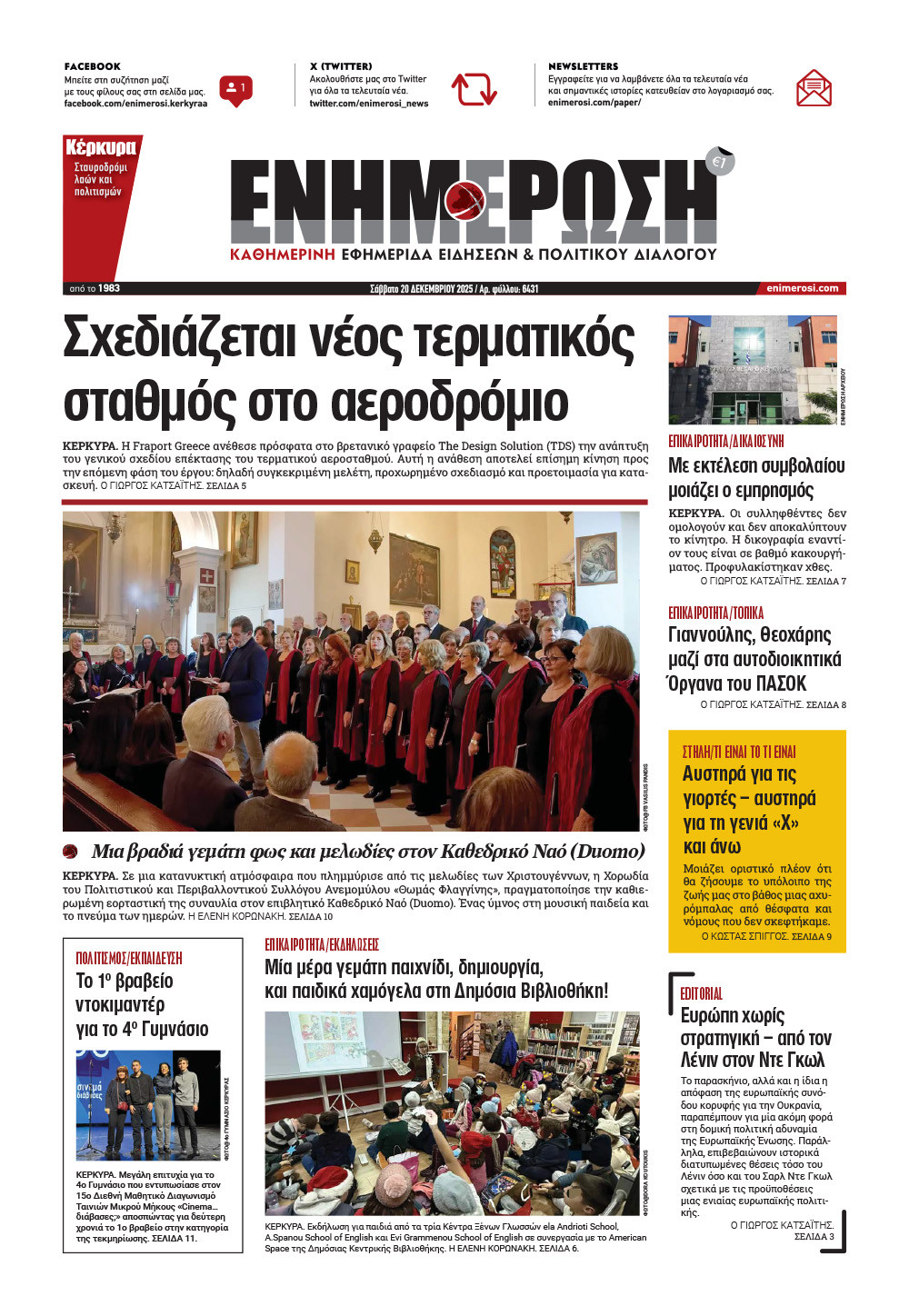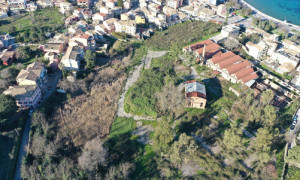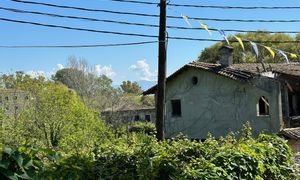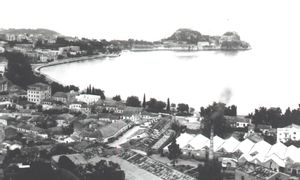One's head spins with the potential for exploiting the treasures concealed within the decades-old, forgotten Desyllas Factory. This could be the answer to the question of why the Municipality seeks to acquire ownership of the property. Numerous similar examples exist in Greece, and the experience from these multifaceted cultural spaces is substantial.
The old industrial complex, which now remains in collective memory, conceals behind its perimeter not only a fragment of Corfu's 19th-century industrial history but also significant findings from ancient Corfu. Few have had the fortune to witness these with their own eyes.
%20wm1706783779.jpg?)
%20wm1706783774.jpg?)
%20wm1706783762.jpg?)
Findings were initially identified in 1983, with excavations commencing in 2005, followed by additional phases in 2006-2008 and a renewed effort in 2011. At that time, overseeing the excavations until her retirement in 2011 was Dr. Garyfalia Metallinou, the Supervisor of Prehistoric and Classical Antiquities. She had closely monitored all stages of the excavations. Speaking to Enimerosi, she discusses the discoveries brought to light by archaeological digs and, most importantly, how they could be used to showcase ancient Corfu.
"In the northwest sector, an impressive architectural ensemble was revealed, constituting part of the fortification of the ancient city. The wall, with a total width of 3.10 metres, has been exposed over a length of 19.20 metres. It consists of two faces constructed from finely cut stones, while their interior is filled with both rough and finely cut stones. The tallest remaining height reaches 1.40 metres. This defensive structure in the southern section terminates in a rectangular tower and entrance leading outside the city, where cemeteries were presumably situated. The northern part appears to continue even farther north. Remnants of the fortification wall were excavated in the northeast section. The easternmost end likely extends to the point where the shore road meets Al. Desylla Street.
%20wm1706783770.jpg?)
Parallel to the ancient wall, a large sewage conduit was uncovered, directing waste outside the city.
Scattered remnants of building structures cover the remaining space. Among them, a noteworthy find is a two-chambered building with a surrounding enclosure, identified as a temple, revealing significant movable artifacts. It is known that near the area of the ancient harbour of Alcinous, various temples existed, including the renowned temple of Alcinous. Archaeological data leads to the conclusion that the architectural remains date back to the 6th and 5th centuries BC. In the southernmost part of the site, mosaic floors and architectural remnants from the Byzantine era were revealed."
Large section of the ancient city
"The entire excavated area appears to constitute a continuation of the ancient market of the Corfiots, starting from the surrounding area of the Basilica of the Old Town, extending through the Kokkotou plot, and reaching the Desylla plot to the north. Here, at the narrowest point of the Kanoni peninsula, the extent of the public space of the city concludes with the ancient wall, which extends to the north and east, forming the northernmost edge of the city, closing off the entrance from the north and west of the harbour of Alcinous. At the opposite southernmost end, passing by the Temple of Artemis, which provided us with the unique pedestal of Gorgo, it reaches up to the tower of Nerantzichas, near the modern cemetery and the airport.
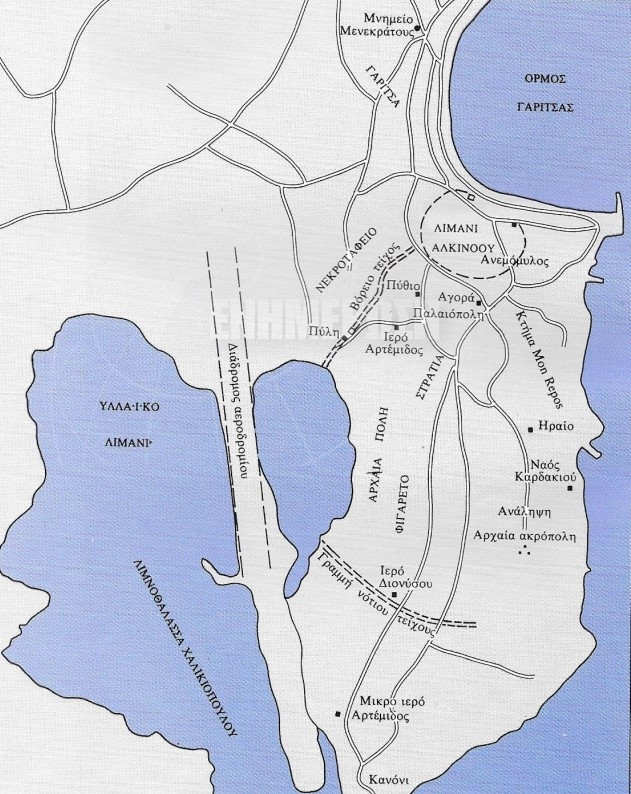
So, we have here a substantial part of the public space of the ancient city that surrounded the harbour of Alcinous with public buildings (temples), infrastructure, and shipyards for the triremes of the Corfiot navy, which was the second largest after the fleet of the Athenians.
This area, together with the Roman baths and the Basilica of the Old Town, the shipyards in the former Kokkotou plot, the Byzantine temple of Saints Jason and Sosipater, the Temple of Artemis, the Monastery of Saints Theodoroi, the remains of the baths at the Olive Institute, the ancient tower in Nerantzichas, the sanctuaries in Mon Repo, forms an extensive archaeological site occupying the northern part of the Kanoni peninsula, where the residential fabric of the ancient city was spread. It constitutes the public space of the ancient city, the ancient market, the sanctuaries, and the harbour of Alcinous with its facilities."
Will and Vision
Dr. Metallinou said, "Even though this area is, to a large extent, fragmented by modern buildings and within the residential fabric, as is the case in many other cities, an archaeological walk is not unfeasible. A walk that would connect all these points of the public space of the Corfiots and link to the city's museums. What is required is the will and vision!
Numerous Examples in Greece
The antiquities of the Desylla plot, if preserved and highlighted alongside the restored buildings of the factory that could be utilised as cultural spaces, constitute a collection of timeless significance. Numerous examples from the rest of Greece exist, and the experience from these cultural spaces is substantial. Gazi in Athens, the Pappas flour mill in Larissa, the brick and tile factory in Volos, etc.
Corfu's advantage lies in the interconnection in the same space with the ancient monuments of the town. There are many Corfiots who believe that there should be an initiative from the local community supported by local authorities for the community to acquire ownership of this specific area located in the heart of the town. Both its buildings and the overall plot can support cultural, archaeological, and environmental activities, truly transforming the image of Corfu."
CHRISTINA GEREKOU
Photos: Dr. Garyfalia Metallinou
 wm1706783767.jpg?crop=800,480) Photo: Dr. Garyfalia Metallinou
Photo: Dr. Garyfalia Metallinou
%20wm1706783779.jpg?)
%20wm1706783774.jpg?)
%20wm1706783762.jpg?)
%20wm1706783770.jpg?)




